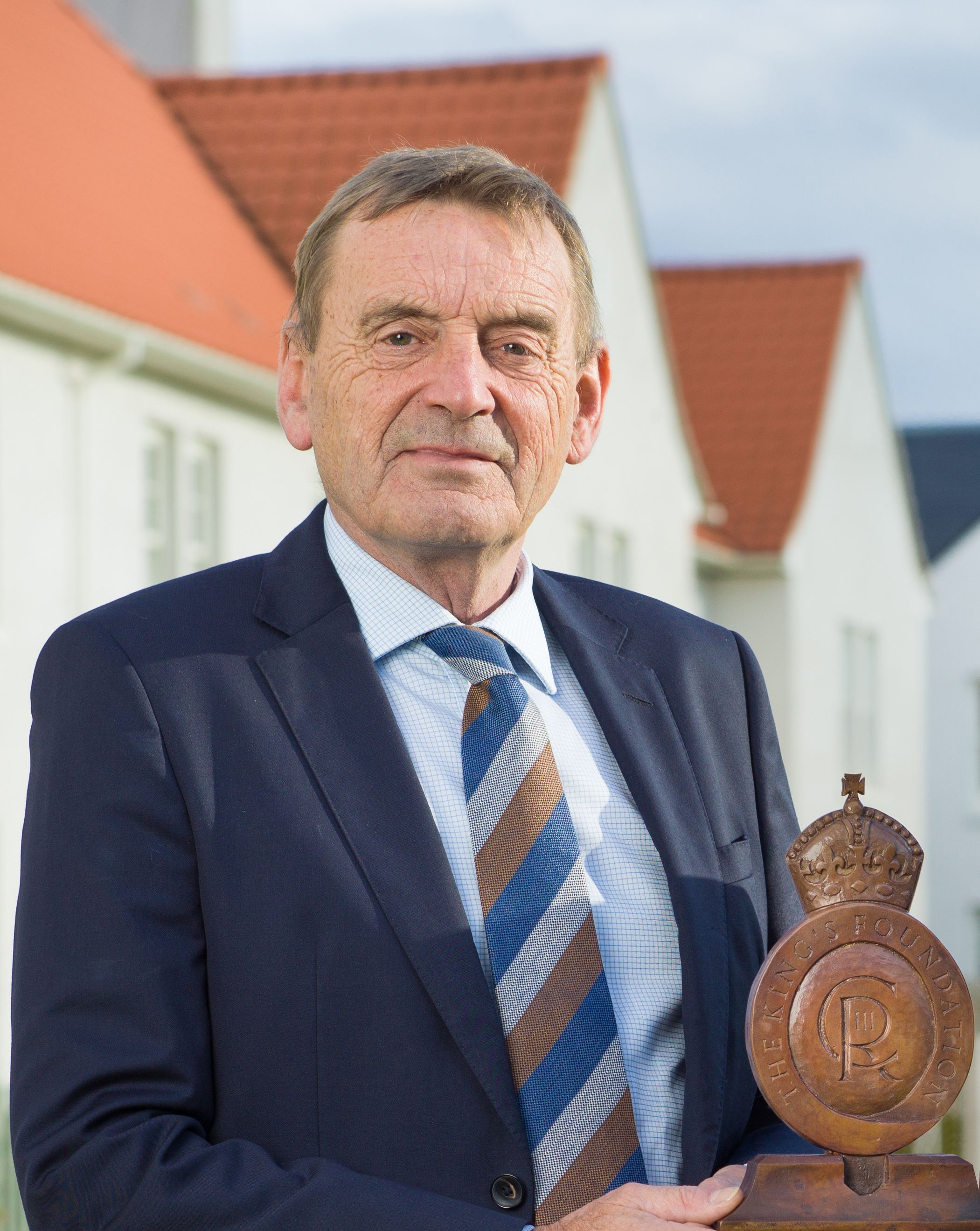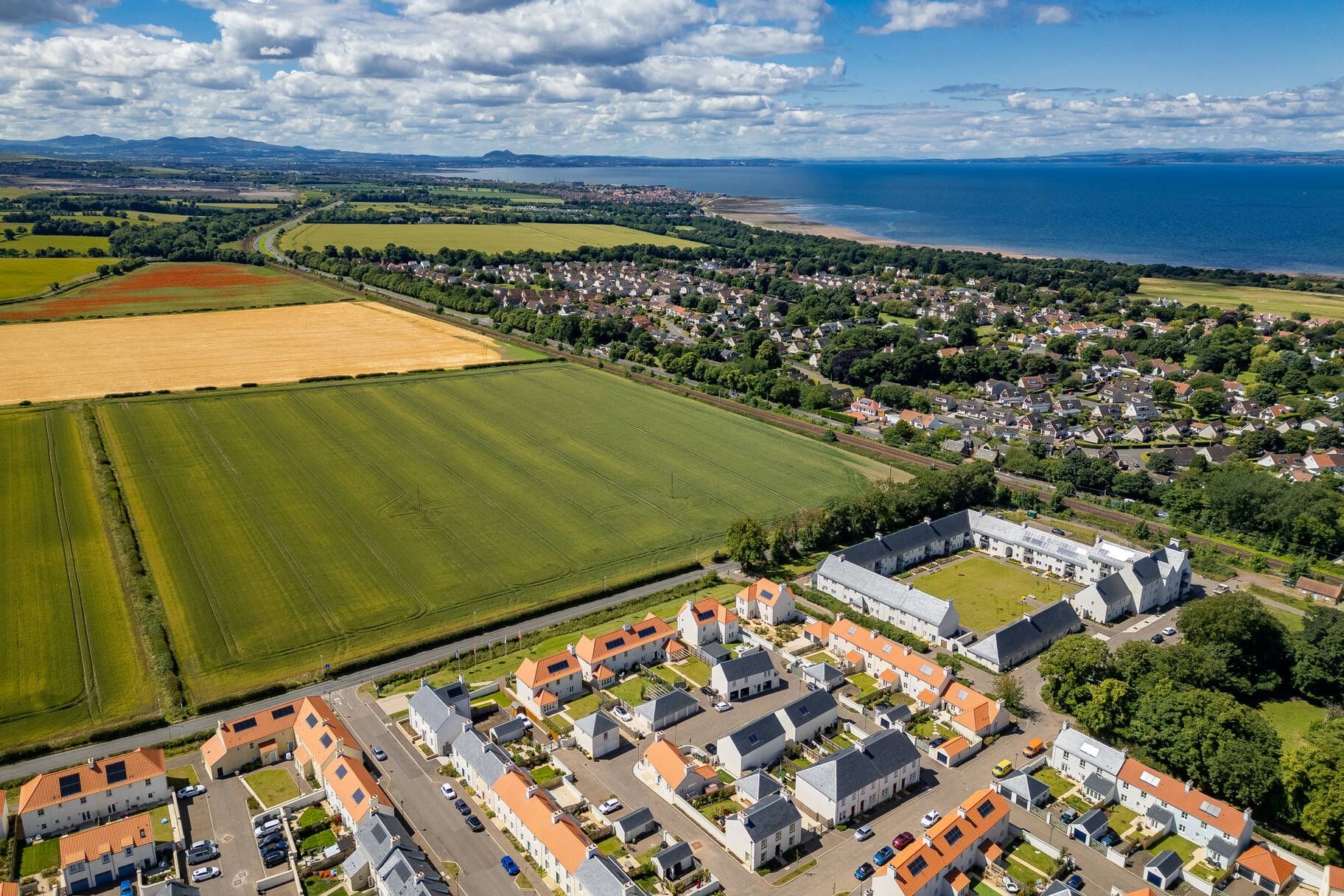Martin Andrews: Delivering communities that address the housing emergency

Martin Andrews
Land expert Martin Andrews outlines the role that Wemyss and March Estates’ expansion of Longniddry can play in tackling Scotland’s housing emergency.
Whether tens, hundreds, or even thousands of years ago, every parcel of our built environment was once green and fertile land. As a land manager, in the business of long-term stewardship, I am highly conscious of how and when land use is changed. Too often urban development comes with a sense of loss and regret. Too few tracts laid out over the last 70 years have made a beneficial contribution to our precious environment or to quality of life. And yet there is a housing crisis, so we must buckle up.
According to Shelter, some 1.5 million people in Scotland are living in overcrowded, dangerous, unstable or unaffordable housing. Housing emergencies have been declared by 13 local authorities to date: Argyll and Bute in June 2023, followed by Glasgow, Edinburgh and, most recently, East Lothian- where I am based. The housebuilding industry says that we must build more houses and faster, with more government spending to speed up planning. Government will say that it needs more money, from somewhere, to fund additional affordable housing programmes; others advocate that more should be invested in our existing housing stock.
If we are to accept that significant numbers of new homes are required as part of any solution, to meet housing needs and grow the economy, the question is how, and where, and what legacy will they leave behind? A recent report by the New Economics Foundation, “Trapped Behind the Wheel”, reveals that new-build development has become more and more car-dependent over the last 15 years, a period over which there has been much talk of making places less car-dependent.

It points to development as usual, in peripheral locations, without the shops, amenities, employment and transport links that are vital for fully-functioning communities. The negative consequences are manifold – more sedentary, isolated lives, especially for our young and elderly; pollution, congestion and pressure on roads, sensitivity to energy prices and increased cost of living.
The National Planning Framework, approved by the Scottish Parliament in 2023, enshrines in policy the concept of “20-minute neighbourhoods”, where people can meet the majority of their daily needs within a 10-minute walk (there and back) from their home. This is the way that settlements used to function. However, the paucity of recent examples that have successfully embodied this principle, with more than just a single shop, is striking. Perhaps the best known and most successful exemplar of the past two decades is Poundbury, an urban extension of the town of Dorchester, which broke the mould through the intervention of HM King Charles, III.
Since breaking ground in 2020, our mixed-use, mixed-tenure expansion of Longniddry has steadily been gaining attention. Having firstly received a major Scotland-wide housebuilding award in 2023 with our partners, Cruden Homes and Places for People; we were delighted to have recently been recognised by The King’s Foundation, through its prestigious, UK-wide Landowner Award, ‘for guiding and delivering the Conservation Area of tomorrow’.
So what makes it different? Firstly, its location. We are blessed that the land is served by train, via which you can be in the centre of Edinburgh in twenty minutes. But we did not want it simply to be a convenient dormitory without a heart, and nor did the residents of Longniddry. Instead, we began by envisioning the future of the land through a public, participatory process known as Enquiry by Design. After which, we developed a masterplan and design code to articulate and enshrine the vision, before handpicking our two capable and sympathetic development partners.

What people first notice is that it looks attractive and is full of resonance with the architectural patterns that give East Lothian’s towns and villages their unique character. However, there is much more beneath the surface. Cars are amply accommodated but not allowed to dominate; the layout instead promotes walkability through characterful mews and wynds coupled with footpaths through parkland and greenspaces.
The masterplan radiates from the historic Longniddry Steading, which we are busily converting to become a hub with shops, workspaces and services to provide for the new homes (which will reach 470 with the current phase) and the wider village. Housing density gently increases towards the village centre and train station, giving more people the locational advantage, including over 100 affordable homes with over-60s provision and mid-market as well as social rent.
It may only be a drop in the ocean of what is required. Urban development is a complex process that involves many hands and agencies. However, as landowner we are in a uniquely privileged and responsible position, with leverage to cut across silos and refashion conventional models of housebuilding for the better.
The usual drive is to cut cost and build cheaply, whereas our objective is to add value and seek a positive legacy. Whilst our expansion of Longniddry could not be anywhere else, we hope that it may demonstrate how, by working together towards a shared vision, we can shape our built environments for the better.
- Martin Andrews is factor of Wemyss and March Estates. which manages approximately 45,000 acres of land across East Lothian, Peeblesshire, Selkirkshire and Gloucestershire, with 165 staff and interests in farming and farming research, forestry, residential and commercial properties, renewables, development and tourism.























